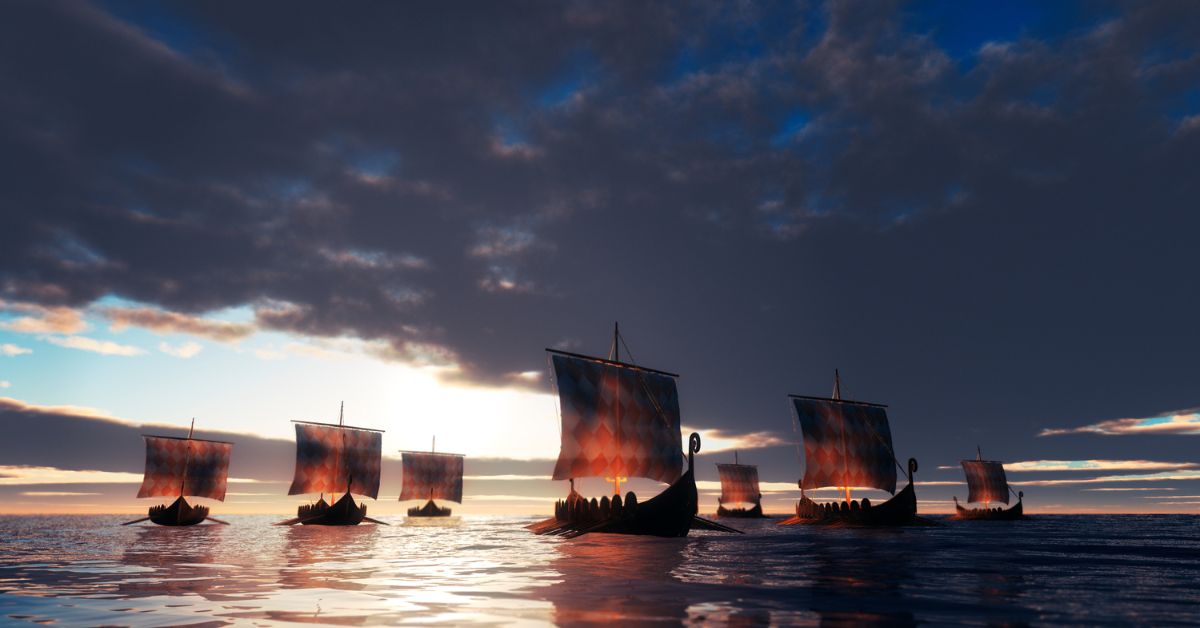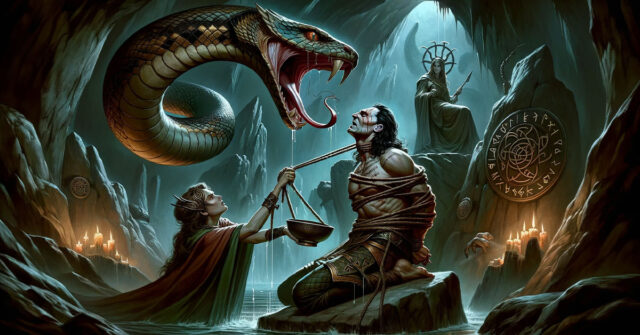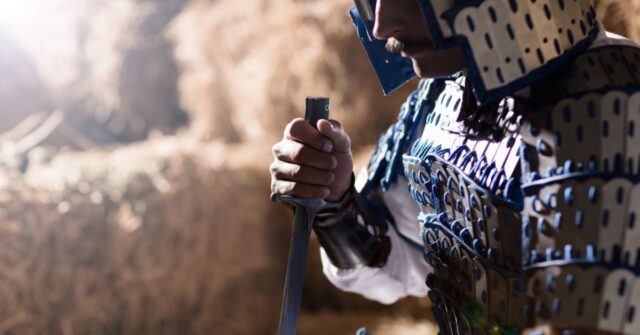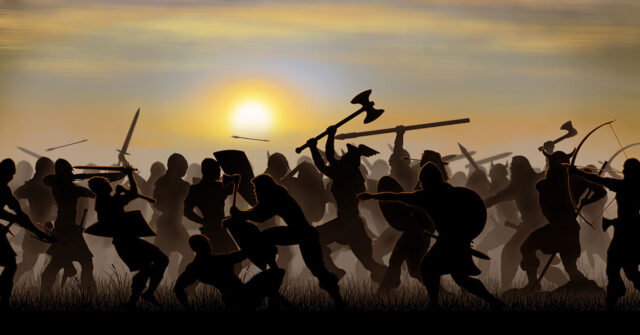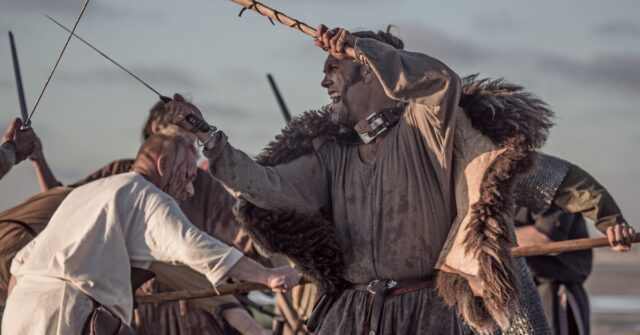The Viking Age, a period of significant historical impact, stretched from the late 8th century to the mid-11th century.
This era, marked by the seafaring exploits of Norsemen from Scandinavia, reshaped parts of Europe and even reached the distant shores of North America.
Let’s embark on a journey back in time to uncover the pivotal moments and intriguing aspects of this epoch.
Introduction to the Viking Age
The Viking Age is traditionally marked by the raid on the monastery at Lindisfarne in 793 AD and concludes with the Battle of Stamford Bridge in 1066.
This period witnessed the Norse people’s transformation from isolated farmers and fishers into feared raiders and traders whose influence was felt far beyond their homeland’s borders.
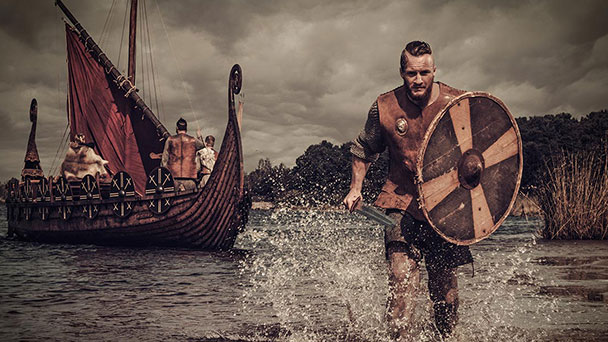
Defining the Viking Age
The term “Viking” conjures images of fearsome warriors in horned helmets. However, not all Norsemen went on raids. The word itself comes from the Old Norse term ‘víkingr’, signifying a sea expedition.
The Viking Age is defined not just by plundering but by exploration, settlement, and the cultural exchange that occurred as the Vikings traveled across Europe and into Asia and the Atlantic.
Historical Context and Significance
At the dawn of the Viking Age, Europe was a mosaic of emerging kingdoms and empires.
The Vikings exploited their superior naval technology to raid, trade, and establish settlements, significantly influencing the political and cultural landscapes of medieval Europe.
Their legacy is a testament to their adaptability, maritime skills, and the profound impact they had on history.
The Dawn of Viking Expeditions
The onset of Viking expeditions is a tale of adventure, wealth, and the search for new territories.
Driven by overpopulation, scarce resources, and the allure of riches and glory in foreign lands, the Norsemen set sail to unknown horizons.
The First Recorded Raid: Lindisfarne, 793 AD
The raid on the monastery at Lindisfarne, a holy island off the coast of Northumberland, England, marked the beginning of the Viking Age.
This assault shocked the Christian world and heralded the arrival of the Viking era. It wasn’t just about plunder; it was a statement of power and intent.
The Viking Expansion: Motivations and Methods
Vikings expanded across Europe, not merely for loot but for land and trade.
Their longships, marvels of the age, enabled them to navigate both open sea and shallow river, reaching as far as the Byzantine Empire and the shores of North America.
Their ventures were motivated by the desire for wealth, fertile lands, and a better life.
Viking Exploration and Settlement
The Viking spirit of adventure took them far beyond mere raiding.
They became settlers, farmers, and traders in the lands they once raided, from the icy landscapes of Iceland and Greenland to the rich soils of England and France.
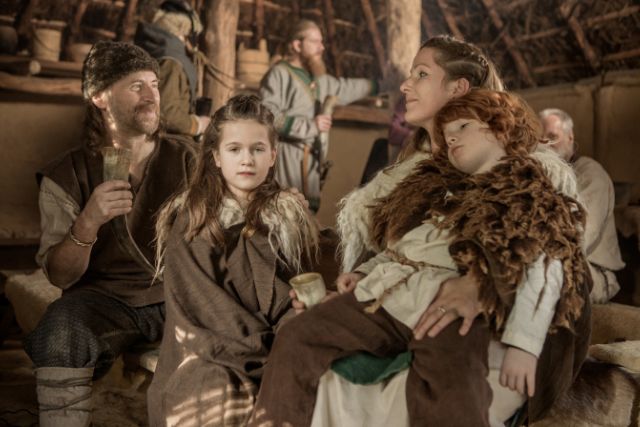
The Settlement of Iceland
Iceland’s settlement in the late 9th century serves as a testament to the Vikings’ exploratory zeal and their quest for new homes.
Led by pioneers like Ingólfr Arnarson, the Norsemen established a society that, despite its isolation, thrived and played a crucial role in the sagas and the legacy of the Viking Age.
The Discovery of Greenland
Erik the Red, exiled from Iceland, set sail and discovered Greenland.
Establishing the first Norse settlements there, he managed to turn a land seen by many as inhospitable into a viable home for Viking settlers, showcasing their resilience and adaptability.
Voyages to Vinland: The North American Excursion
The sagas tell of Leif Erikson’s ventures to Vinland, what is now known as North America, long before Columbus’s arrival.
These voyages highlight the Vikings’ daring navigational skills and their brief but noteworthy presence in the New World.
The Viking Social Structure and Culture
The societal fabric of the Viking Age was complex, with a distinct hierarchy and a rich cultural panorama that included art, literature, and enduring myths.
The Roles of Jarls, Karls, and Thralls
Viking society was stratified into three main classes: the jarls (nobility), karls (freemen and farmers), and thralls (slaves).
This structure influenced everything from daily life to governance, with the Althing in Iceland serving as an early form of democratic assembly.
Religion and Mythology
The Norse pantheon, with gods like Odin, Thor, and Freyja, played a central role in Viking belief systems.
These deities and the myths surrounding them not only explained the natural world but also offered a framework for understanding life and death, bravery, and the pursuit of honor.
Everyday Life in Viking Society
Daily life during the Viking Age was shaped by the harsh realities of the time.
From farming and animal husbandry to the roles of women, who often managed estates while their husbands were away, the societal norms were practical and geared towards survival.
Viking Art and Runes
Viking art, characterized by intricate knotwork and animal motifs, adorned everything from their ships to their weapons.
Runes, their system of writing, were used not just for communication but also for protection and prophecy, etched onto stones and artifacts across their territories.
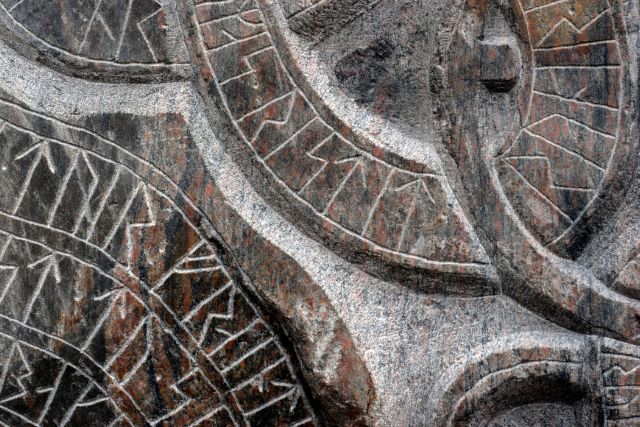
Key Battles and Conflicts
The Vikings were not only explorers and settlers but also formidable warriors. Their battles and conflicts, often with kingdoms in Europe, were turning points that reshaped the continent.
The Battle of Lindisfarne
Though more a raid than a battle, the attack on Lindisfarne is emblematic of the Viking Age’s beginnings.
It signaled the Norsemen’s arrival on the world stage and the start of centuries of conflict and interaction with the kingdoms of Europe.
The Siege of Paris (845 AD)
The siege of Paris in 845 by Ragnar Lothbrok and his fleet is legendary.
By navigating the Seine, the Vikings showcased their strategic prowess, eventually extracting a ransom from King Charles the Bald, demonstrating the significant threat the Vikings posed to Europe.
The Battle of Stamford Bridge: The End of the Viking Age in England
The Battle of Stamford Bridge in 1066, where King Harold Godwinson’s forces defeated the invaders led by King Harald Hardrada of Norway, is often cited as the end of the Viking Age.
It marked a turning point, leading to the integration of Norse culture into the fabric of English society.
Political Impact of the Vikings
The Vikings left an indelible mark on the political landscapes of Europe. Their raids, settlements, and integration into local societies led to significant cultural and political transformations.
Influence on British Isles
In the British Isles, Viking raids and settlements led to the establishment of the Danelaw in England and significantly influenced the cultural and genetic makeup of the region.
Their legacy is still evident in place names, language, and legal systems.
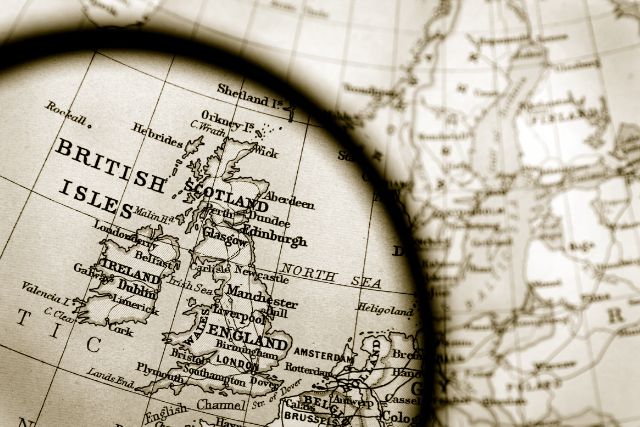
The Foundation of the Danelaw
The Danelaw, an area of England under Norse law, was the result of treaties between Alfred the Great and the Viking invaders.
This arrangement allowed for peaceful coexistence and the fusion of Norse and Anglo-Saxon cultures, which shaped the development of England.
Impact on Russia and the East
In the east, Norse traders and warriors, known as Varangians, ventured down Russian rivers, establishing trade routes that connected Scandinavia with Constantinople and the Arab world.
They played a key role in the foundation of the Kievan Rus’, the precursor to modern Russia and Ukraine.
The End of the Viking Age
The conclusion of the Viking Age is a topic of debate among historians, but the Battle of Stamford Bridge serves as a symbolic endpoint.
This battle not only marked the end of Viking dominance in England but also the beginning of their integration into European Christendom.
The Battle of Stamford Bridge: A Turning Point
The defeat of the Vikings at Stamford Bridge underscored the changing dynamics of power in Europe.
It highlighted the end of an era of Viking expeditions and the start of a new chapter in the history of the Norse people.
The Integration into Christian Europe
As the Viking Age waned, Norsemen increasingly adopted Christianity, integrating into the societies they once raided.
This transformation from pagan warriors to Christian kings and citizens marked a profound shift in Norse culture and its role in European history.
Legacy of the Viking Age
The Viking Age may have ended, but its legacy endures. From language and literature to modern cultural representations, the Vikings continue to fascinate and inspire.
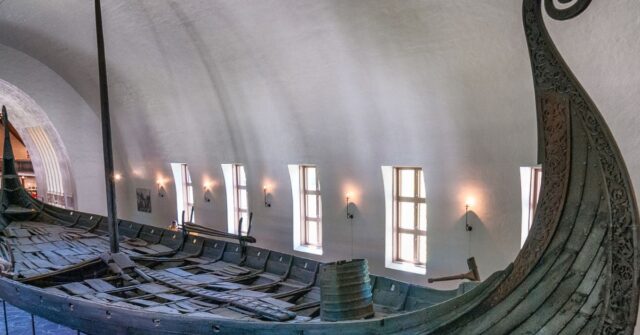
Archaeological Discoveries
Recent archaeological findings, from buried ships to rune stones, offer a glimpse into the Viking world.
These discoveries continue to shed light on the complexity and reach of Norse society during the Viking Age.
Viking Legacy in Modern Culture
Today, the Vikings are celebrated in literature, movies, and television, reflecting a lasting fascination with their culture and history.
Their spirit of exploration, resilience, and cultural impact remains a source of inspiration.
Conclusion
Our voyage through the Viking Age reveals a tapestry of exploration, conflict, and cultural exchange that shaped the course of history.
The Vikings, often remembered as raiders, were also explorers, settlers, and traders who left an indelible mark on the world.
Their legacy, embedded in our culture and history, continues to captivate and intrigue us to this day.

